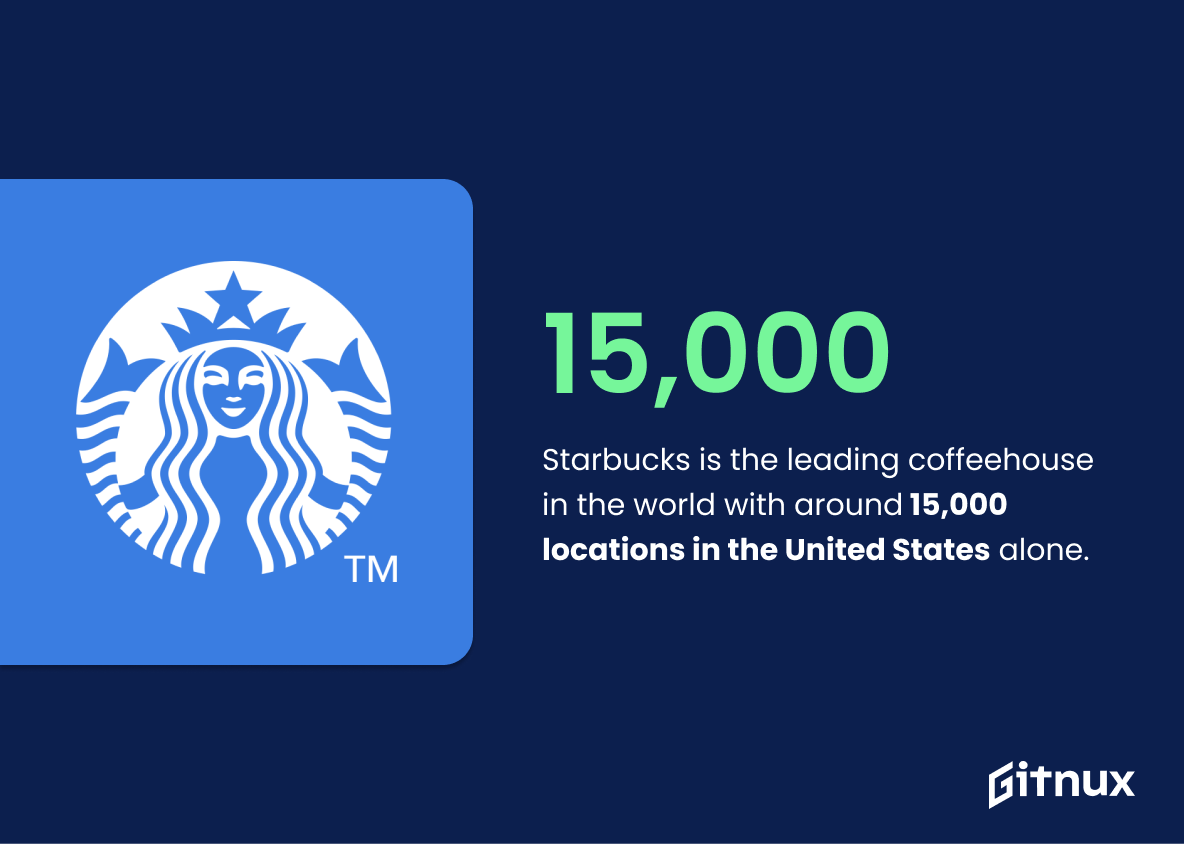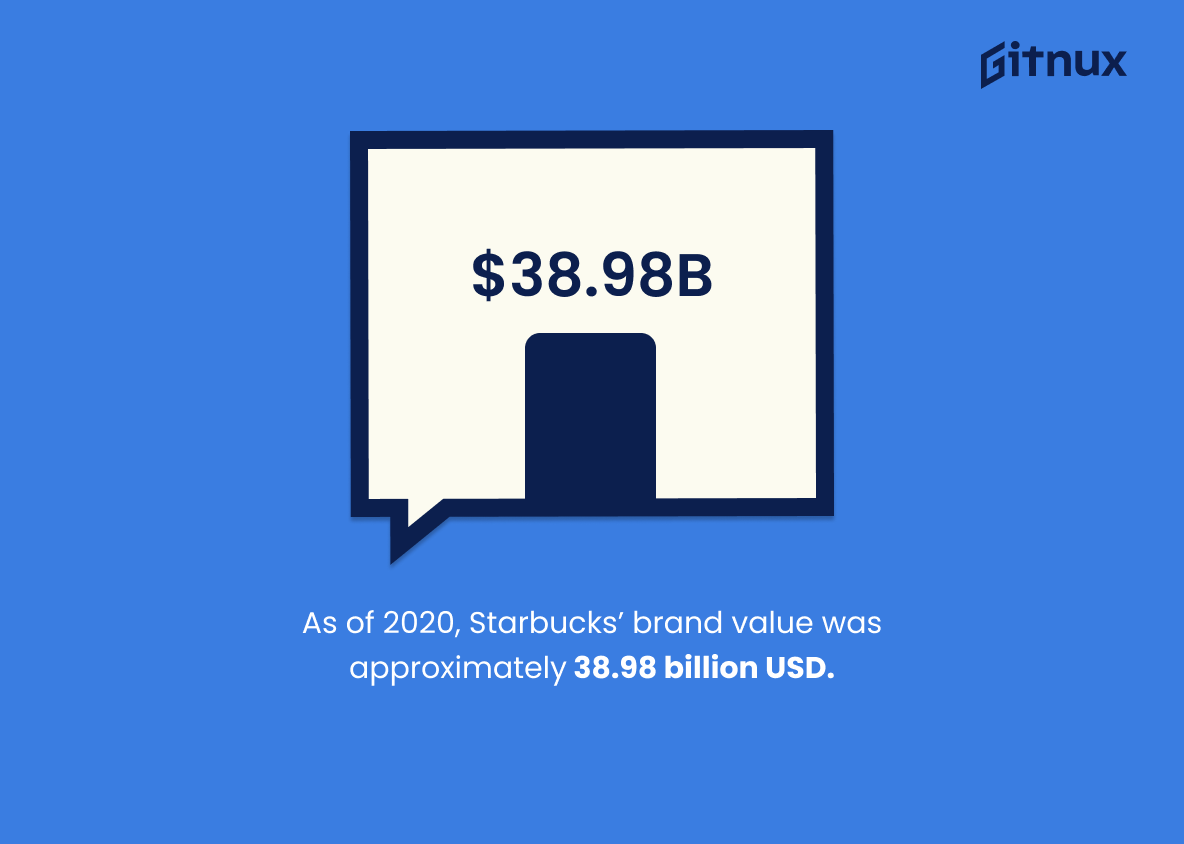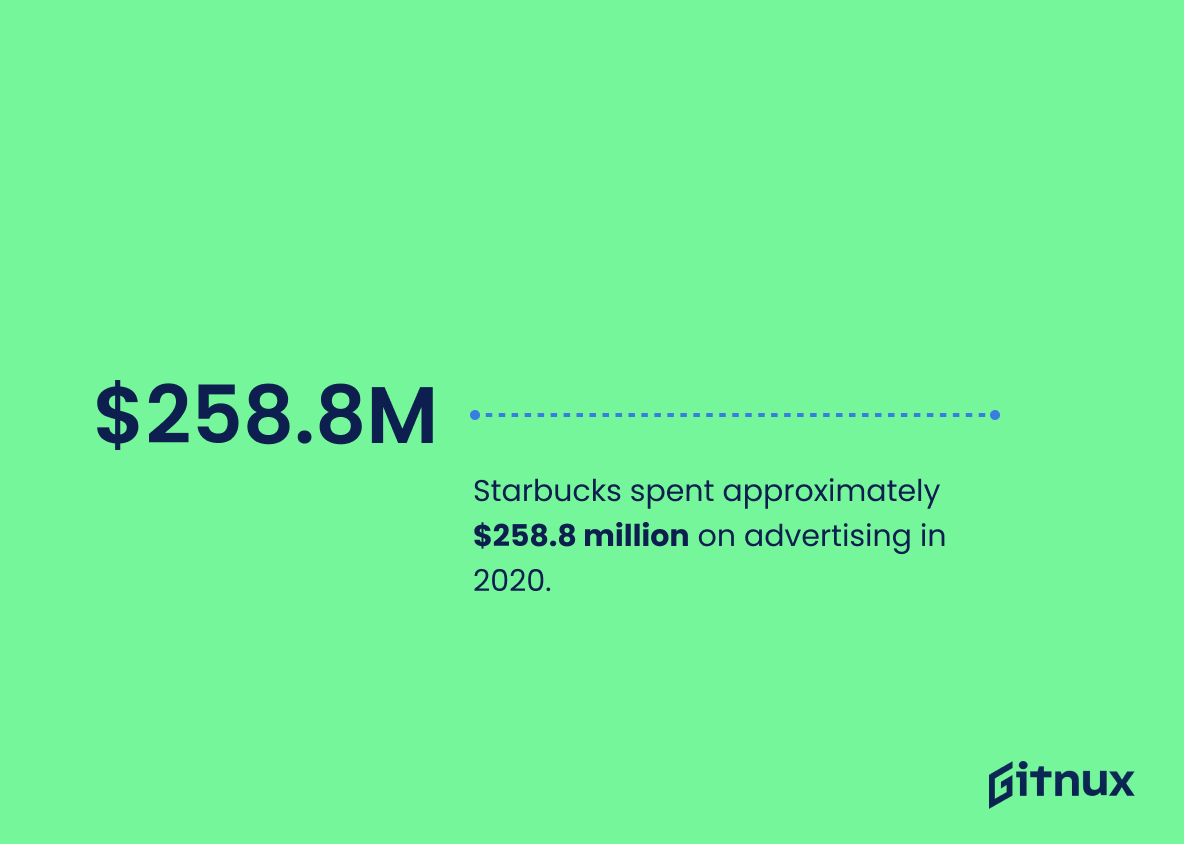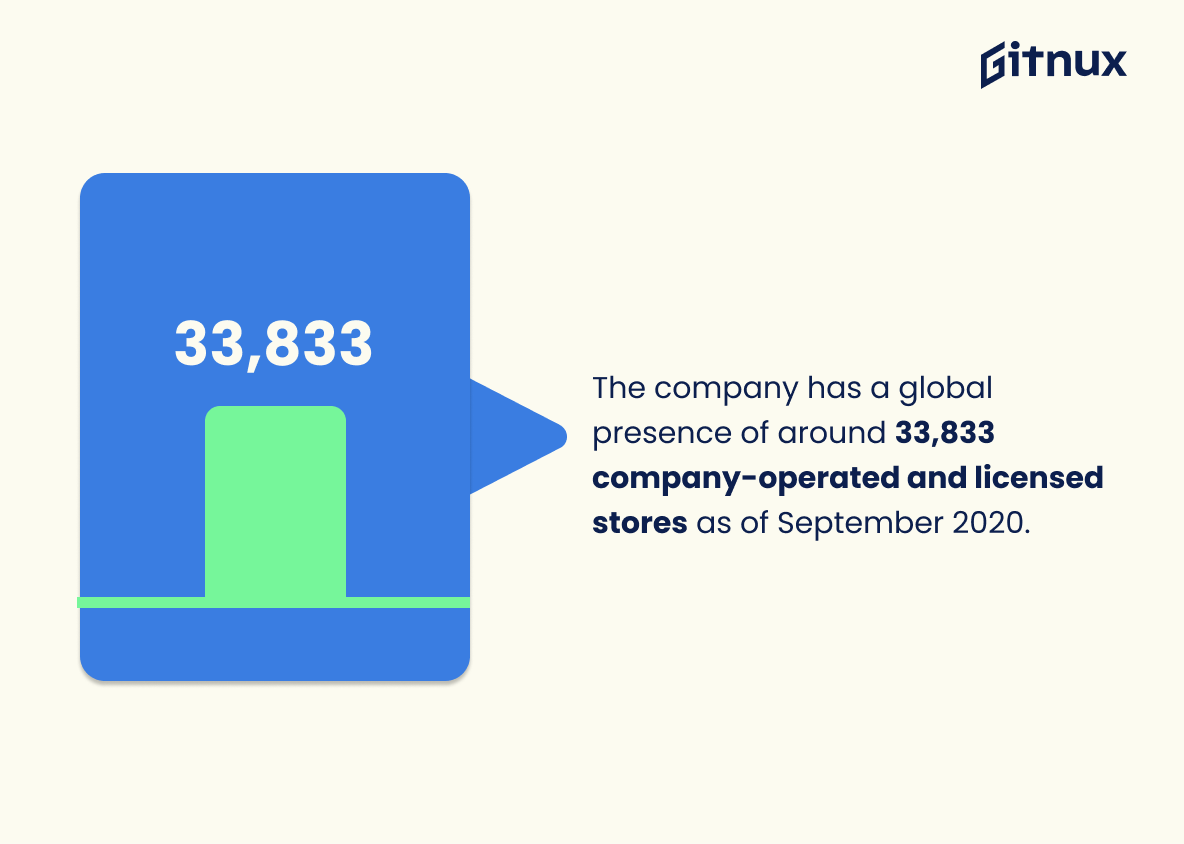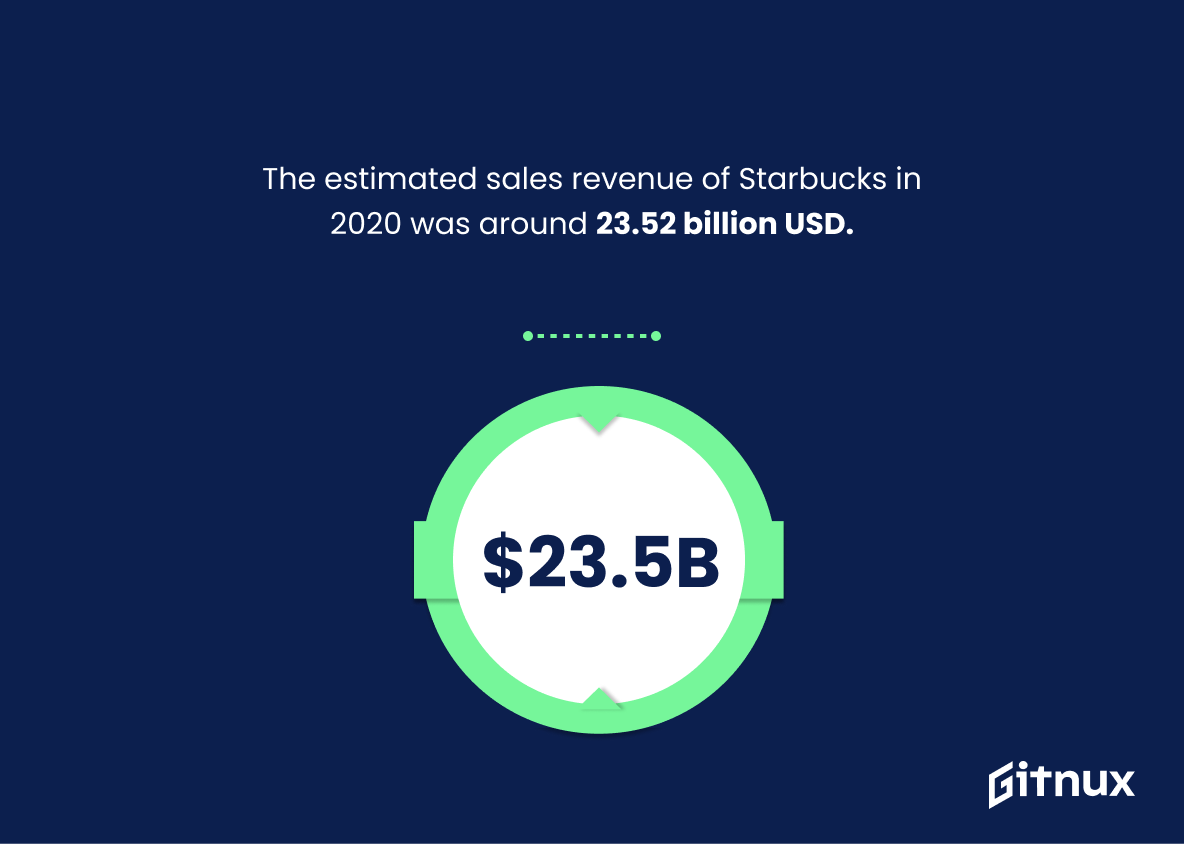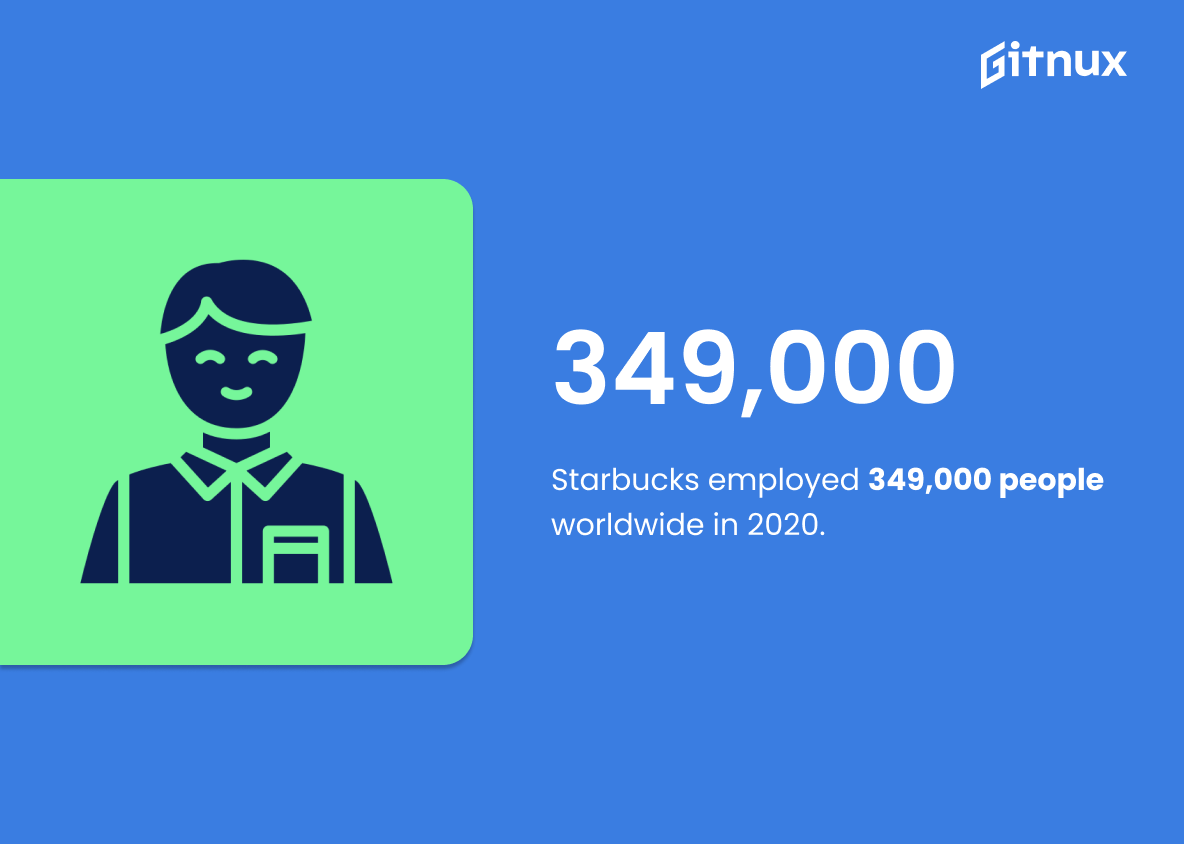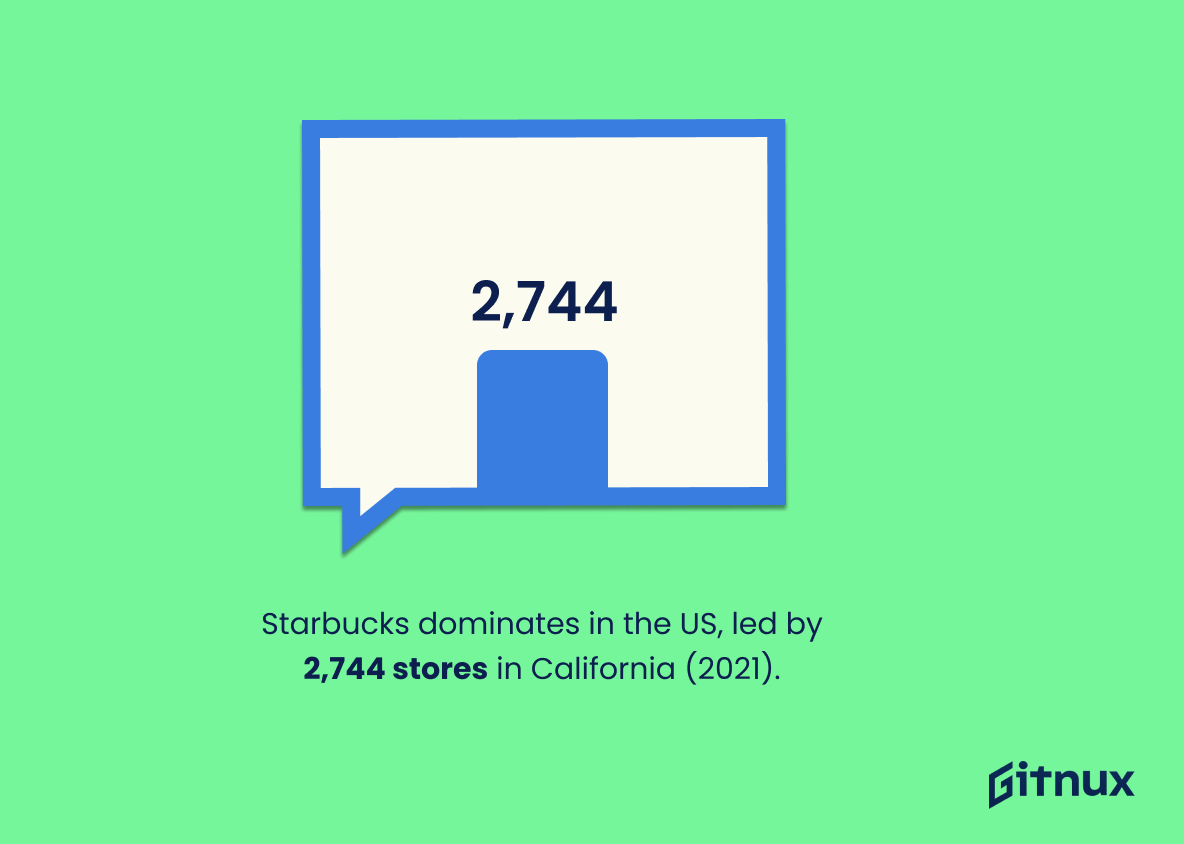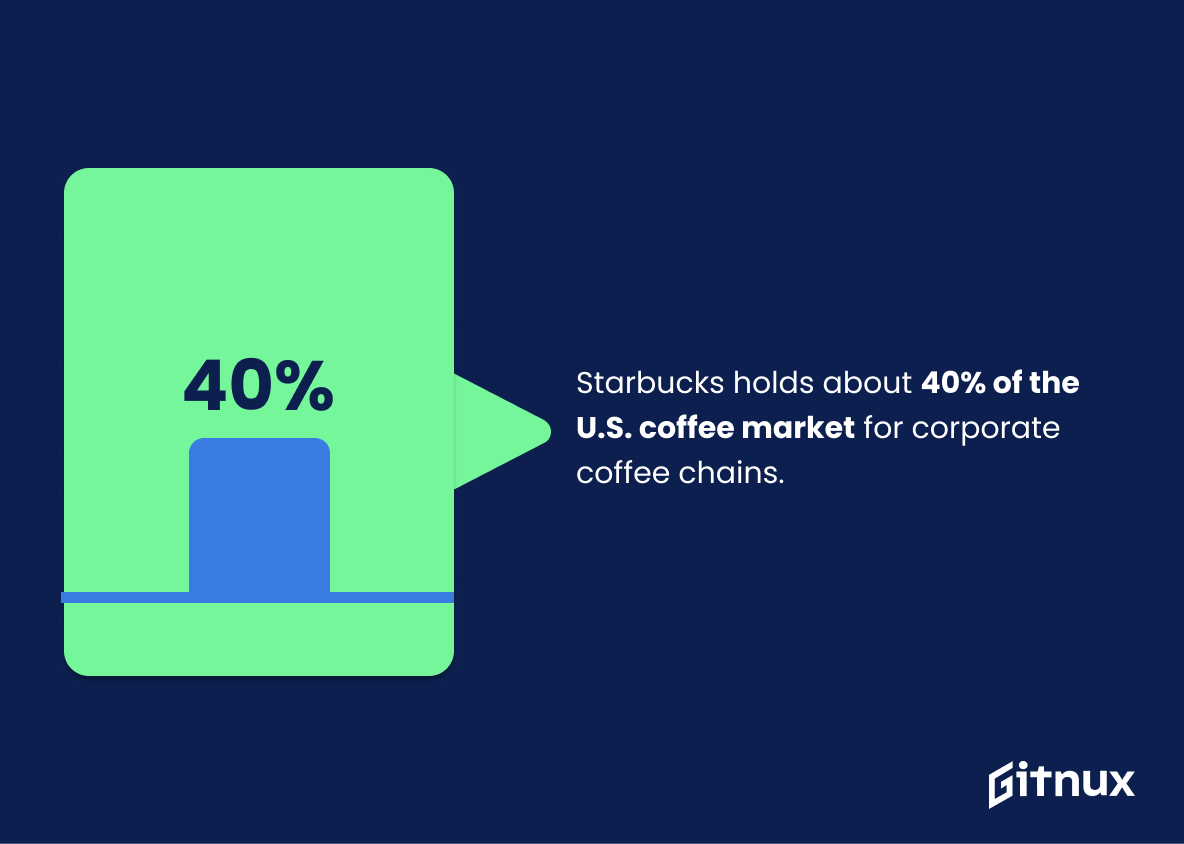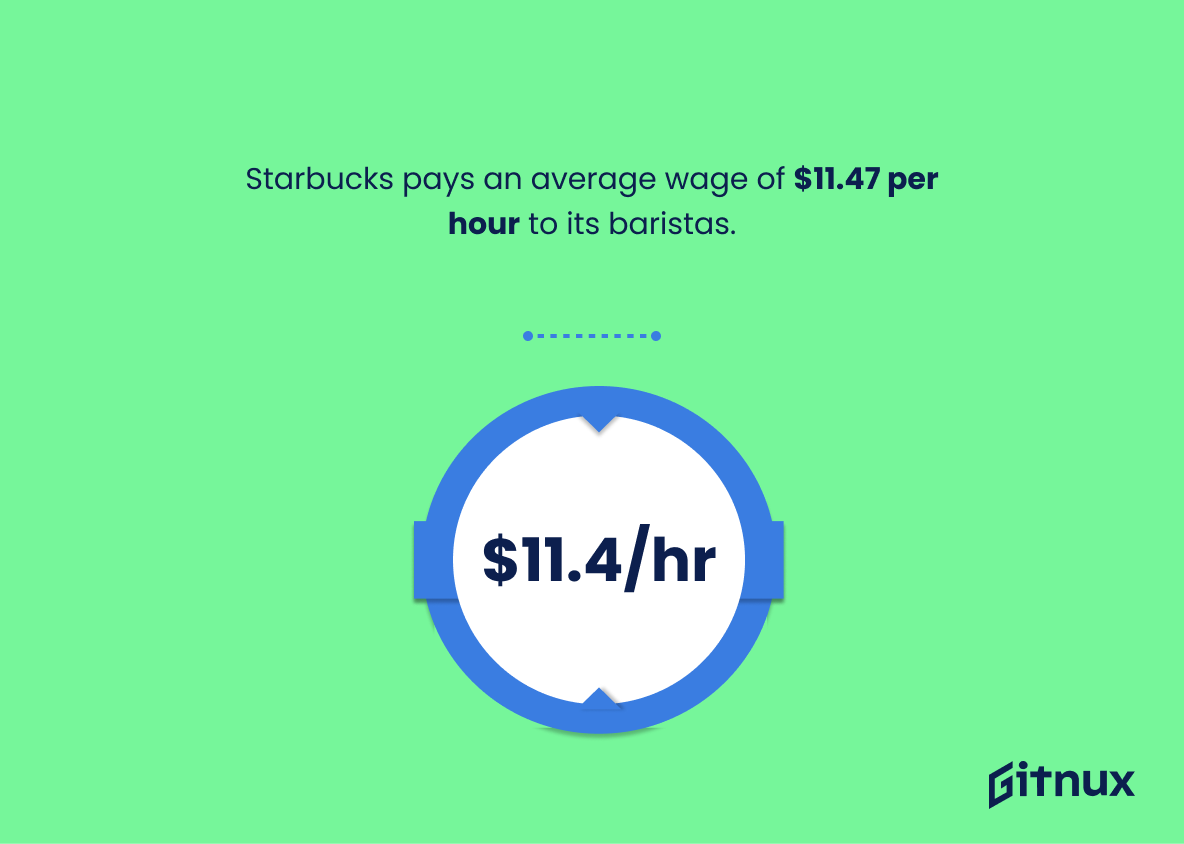Envision stepping into an aromatic, bustling sanctuary, where baristas craft your coffee-spiked haven and the smallest sip promises the ultimate comfort. This remarkable experience is what you’re granted every time you visit a Starbucks. Starbucks Corporation, a leading force in the global coffee industry, has not only redefined coffee drinking habits worldwide, but also significantly reinforced its presence through prudent business strategies. In this blog post, we delve into the heart of Starbucks’ industry statistics, showcasing how this coffee giant has weathered uncertain economic tides to stand as an industry behemoth, and what these numbers ultimately spell out for its future trajectory. We invite you to join us on this journey, as we shed light on the number-crunching story behind those alluring green-emblazoned white cups.
The Latest Starbucks Industry Statistics Unveiled
Starbucks is the leading coffeehouse in the world with around 15,000 locations in the United States alone.
Showcasing Starbucks’ strength as a global brand leader, the staggering figure of 15,000 U.S locations underscores the coffee giant’s overwhelming dominance in the domestic market. This fact, shining in the constellation of Starbucks Industry Statistics, indicates a substantial footprint and market penetration. It illuminates the extent of their success story and serves as a concrete exemplar of their growth strategy. For anyone seeking insight into their key accomplishments or identifying competitive benchmarks, the significance of this statistic cannot be overstated.
As of 2020, Starbucks’ brand value was approximately 38.98 billion USD.
In the continuously evolving world of coffee industry where competition is steep, Starbucks’ brand value standing at approximately 38.98 billion USD in 2020 acts as a testament to the company’s firm grip on the market. It’s a vibrant reminder of the brand’s global popularity, steering not just brand recognition but also customer loyalty towards its favor. This significant number also provides a firm barometer of Starbucks’ potential for future growth, considering that brand value often motivates investment decisions. A soaring brand value like this indicates Starbucks’ ability to consistently deliver quality, innovate and maintain a strong connection with a diverse set of consumers around the world.
Starbucks spent approximately $258.8 million on advertising in 2020.
Shedding light on the colossal figure of approximately $258.8 million spent on advertising by Starbucks in 2020, we journey into the heart of understanding the latte titan’s operational dynamics. The figure is akin to an expressive narrator, breaking down just how fiercely Starbucks values its market presence and customer engagement. After all, to navigate the stormy seas of the highly competitive cafe industry, establishing a powerful brand image is vital. Moreover, it confides in the readers about Starbucks’s commitment to flourishing its customer base, providing new insights into the coffee giant’s priorities. In essence, it’s a monetary testimony that Starbucks sees advertising as an investment, not an expense – an eloquent testament to its business strategy.
The company has a global presence of around 33,833 company-operated and licensed stores as of September 2020.
The eye-popping number of approximately 33,833 company-operated and licensed stores across the globe, as of September 2020, boasts a powerful tale of Starbucks’ omnipresence. This figure isn’t just a testament to the giant strides Starbucks has taken in its expansion journey. It’s a quantitative exhibit of its popularity and acceptance among millions of coffee lovers worldwide. In the arena of industry statistics, this denotes an unmatched dominance over rival coffee chains, illuminating the supremacy of Starbucks in the global coffee industry. Furthermore, this staggering statistic showcases the organizational prowess needed to manage such a large number of outlets effectively and efficiently, reflecting positively on the company’s operational capabilities.
The estimated sales revenue of Starbucks in 2020 was around 23.52 billion USD.
When immersed in the realm of Starbucks Industry Statistics, the striking figure of the 2020 estimated sales revenue of approximate 23.52 billion USD serves as a potently brewed espresso shot of financial insight. This robust number indicates Starbucks’ formidability in the beverage industry, underscoring its profit generating prowess amidst a year challenged by an unexpected global pandemic. Furthermore, juxtaposing this data point with previous years’ revenues could highlight growth trends or assess the impact of various market dynamics. As we pour over additional statistics, this revenue figure can provide context and a reference point, percolating deeper understanding of Starbucks’ financial standing and strategic trajectory. Such robust analysis can add depth to conversations around market share, competition, and consumer behavior across the cafe industry.
Starbucks employed 349,000 people worldwide in 2020.
Imagine the number of hearts pulsating with the rhythm of Starbucks’ mission; an impressive 349,000 worldwide in 2020. This figure isn’t just a symbol of Starbucks’ global impact, but an economic powerhouse echoing employment opportunities, diversity, and growth. Within the technicolor mosaic of the Starbucks industry statistics, this contributes an essential shade – a testament to the brand’s reach, operational scale, and social responsibility. This statistic isn’t simply a snapshot; it’s the very pulse of Starbucks’ vibrant, caffeinated world.
Starbucks has the highest footprint in America, with California having the most number of Starbucks stores (2,744) as of 2021.
This intriguing statistic offers a deep insight into Starbucks’ dominance in the American market. As if painting a clear picture of the coffee giant’s stronghold, the impressive number of 2,744 stores peppered across California, as of 2021, only underscores Starbucks’ sprawling presence. For anyone looking for the pulse of the American coffee shop industry, this number deciphers the decoded reality. It echoes Starbucks’ strategy, ambition, and successful implementation of its business model in the Golden State. Furthermore, it sets up a rare spectacle of Starbucks’ influence, turning an analytical eye towards what could possibly be a case study for its constructive success within industry statistics.
Starbucks’ mobile app had roughly 25.2 million users in 2018, making it one of the most popular food retailer apps.
For a deep dive into the inspiring world of Starbucks Industry Statistics, a striking number stands out. In 2018, the Starbucks mobile app played host to approximately 25.2 million users. A coffee enthusiast might ponder – why the sudden interest in an app? But from an industry standpoint, this is more than a mere piqued interest.
This figure firmly positions Starbucks’ mobile app as an undisputed king in the food retailer app battle. Such a remarkable user base not only highlights the digital engagement Starbucks managed to foster but is also indicative of the shift in consumer purchasing behavior. With this unrivaled user superiority, Starbucks has set an industry-leading benchmark in adopting technology for enhancing customer convenience and loyalty, thereby driving its success even further.
Therefore, as we crunch these numbers, the 25.2 million users’ statistic doesn’t just reflect on Starbucks’ app popularity; it’s a testament to the brand’s digital growth stride and its ability to stride confidently into an increasingly app-oriented future. So, let’s raise our steaming mugs of coffee to the behemoth that Starbucks is, navigating the industry one app user at a time.
Starbucks holds about 40% of the U.S. coffee market for corporate coffee chains.
Immerse yourself into the realm of Starbucks Industry Statistics and encounter the undeniable testament of Starbucks’ domination in the world of corporate coffee chains in the U.S. Grasping a mammoth portion of approximately 40%, this beloved brand isn’t just involved in the game, but it seems to be leading the tournament. As majestic as it might sound, this magnitude isn’t just a figure. It outlines the evident preference of American consumers, revealing their propensity to choose a Grande over other options. More importantly, it unfurls a tale of consistent tastes, unwavering customer loyalty, and successful endeavors in nourishing customer relationships. This invaluable data isn’t just an aspect to adorn but the lifeblood that gives insight into the rhythm of the U.S coffee market and Starbucks’ pulsating role within it.
Starbucks sold approximately 887 thousand bags of whole coffee beans in U.S. supermarkets in 2020.
Delving into the realm of Starbucks industry statistics, the revelation that Starbucks sold approximately 887 thousand bags of whole coffee beans in U.S. supermarkets in 2020 provides profound insights. It reflects their dominion in the coffee market, substantiating the brand’s omnipresence beyond its conventional café chains. Further, it symbolizes Starbucks’ adept adaptation to changing consumer trends, as an increasing number of coffee enthusiasts prefer harnessing their barista skills at home. Not to be overlooked, this stellar figure reinforces Starbucks’ operational efficiency and effective distribution network, enabling them to flood the supermarkets with their product, making it a fascinating case study for decision-makers, marketers, and industry observers.
Starbucks has committed to donate 50 million meals by 2025 in the U.S.
Highlighting Starbucks’ pledge to donate 50 million meals by 2025 implicitly illuminates their proactive approach to social responsibility. This is not only a robust demonstration of their commitment to community service, but it also showcases their capacity to impact a significant number of lives. In the context of Starbucks Industry Statistics, this empowers observers to gauge the magnitude of their societal footprint, extending far beyond the perimeter of coffee production and sales. It further accentuates their role as a corporate citizen, making them an interesting case study for discussions around corporate philanthropy. Starbucks’ commitment to this cause further reveals their industry leadership and capacity to set benchmarks, setting the tone for competitors within the hospitality and food services sector.
As of 2018, Starbucks operated two Artificial Intelligence projects: Deep Brew and reinforcement learning platform, to optimize store operations and customer experience.
Highlighting Starbuck’s utilization of two Artificial Intelligence projects, namely Deep Brew and a reinforcement learning platform, this statistic reveals the innovative strides the company is making in integrating technology into their operations. Within a post detailing Starbucks Industry Statistics, this nugget of data demonstrates Starbucks’ commitment to not just maintaining, but enhancing store operations and customer experiences. The advent of AI in their strategy paints a broader picture of their willingness to leverage cutting edge technologies to achieve efficiency, customer satisfaction, and stay ahead in the competitive coffee shop industry. Additionally, it underscores a progressive trend within the industry which could potentially influence other competitors to adopt similar technologies.
In 2018, China was Starbucks’ fastest growing market, with a new store opening every 15 hours.
When painting the picture of Starbucks’ global influence, an intriguing testament to the company’s dynamism is the 2018 data from China – a new Starbucks outlet broke ground every 15 hours. This flurry of expansion in the East serves as a monument to Starbucks’ thriving adaptability to different cultures and markets. In a blog post saturated with Starbucks Industry Statistics, this shows Starbucks not as merely a U.S. entity, but a globally embraced enterprise. Simultaneously, it underlines the broadening acceptance of western coffee culture in China, a traditionally tea-dominant market, indicating the brand’s strength and influence.
Starbucks serves 100 million customers per week.
Diving into the staggering figure of 100 million customers served by Starbucks each week holds immense significance in dissecting Starbucks Industry Statistics. This jaw-dropping number underscores not only the coffee giant’s remarkable reach and market saturation but also its ability to retain a massive customer base. This revelation sheds vital light on Starbucks’s substantive influence in the coffee industry while providing an essential benchmark for competitors. Moreover, this voluminous traffic hints at the scale of operations, logistics, and supply chain management at Starbucks. Analyzing this key statistic, one can gain critical insights about consumption patterns, customer preferences, and the brand’s successful strategies in winning customer loyalty – all crucial facets when plunging into any discourse about Starbucks Industry Statistics.
Starbucks pays an average wage of $11.47 per hour to its baristas.
Delving into Starbucks Industry Statistics, the average wage of $11.47 per hour for Starbucks’ baristas plays a key role. This figure not only confers a tangible sense of the company’s remuneration blueprint but also offers a comparative yardstick vis-à-vis industry competitors. It’s an insightful piece of data that aids in understanding the potential earnings of employees in this industry. Moreover, it might provide underlying assumptions regarding how Starbucks values and invests in its workforce, an aspect that can have rippling effects on staff motivation, retention, and overall job satisfaction. Consequently, the figure can lend itself to various interpretations and discussions, making it an integral pivot of Starbucks industry statistics.
Conclusion
Starbucks has consistently shown its prowess as a leader in the global coffee industry through its impressive performance and robust growth. The informative industry statistics shared in this blog post provide detailed insights into Starbucks’ operational success, customer loyalty, technological advancements, and widespread market reach. Despite facing stiff competition and various market challenges, Starbucks continues to leverage its strategic initiatives and innovative offerings to maintain its dominance. As we look to the future, it is clear that Starbucks’s blend of quality product offerings, unparalleled customer experience, strategic market positioning, and commitment to sustainability places them at the forefront of the coffee industry’s evolution. Starbucks is not just a coffee company; it is a global phenomenon that positively affects millions of lives every day.
References
0. – https://www.stories.starbucks.com
1. – https://www.www.businessinsider.com
2. – https://www.www.cnbc.com
3. – https://www.techcrunch.com
4. – https://www.www.payscale.com
5. – https://www.www.statista.com
6. – https://www.www.cnn.com
7. – https://www.www.worldatlas.com
8. – https://www.www.emarketer.com
